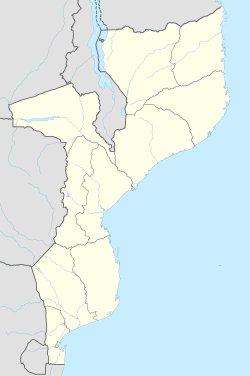Tete | |
|---|---|
 One-kilometre-long suspension bridge over the Zambezi River | |
| Coordinates: 16°10′S33°36′E / 16.167°S 33.600°E | |
| Country | |
| Province | Tete Province |
| District | Cidade de Tete |
| Area | |
• Total | 149.3 km2 (57.6 sq mi) |
| Elevation | 140 m (460 ft) |
| Population (2017 census) | |
• Total | 305,722 |
| • Density | 2,048/km2 (5,304/sq mi) |
| Climate | BSh |
Tete is the capital city of Tete Province in Mozambique. It is located on the Zambezi River, and is the site of two of the four bridges crossing the river in Mozambique. A Swahili trade center before the Portuguese colonial era, Tete continues to dominate the west-central part of the country and region, and is the largest city on the Zambezi. In the local language, Nyungwe, Tete (or Mitete) means "reed".
